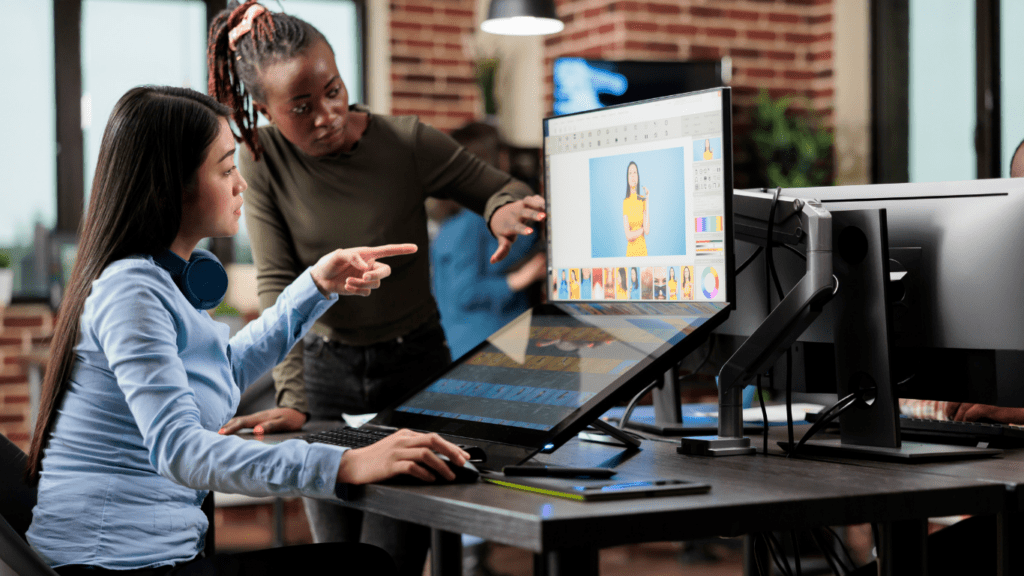Editing is where creativity meets precision. It’s amazing how a few tweaks can transform raw content into something polished and captivating. Over the past year, editing styles have evolved, reflecting new trends, technologies, and artistic preferences that continue to shape how we present stories, visuals, and ideas.
An Overview Of Editing Styles
Editing styles reflect creative approaches and technical decisions used to refine content. These styles range from bold and imaginative edits to subtle and seamless enhancements. Each method influences the tone, pacing, and visual appeal of the final work.
1. Minimalist Editing
Minimalist editing prioritizes simplicity and clean lines. It removes excess elements, maintaining focus on essential details. This approach often suits corporate videos, product photography, and modern design projects. An example includes desaturated visuals paired with crisp text overlays.
2. Cinematic Editing
Cinematic editing uses techniques like color grading, motion integration, and dramatic pacing to create a film-like experience. It’s prevalent in promotional campaigns, music videos, and travel vlogs. Wide-angle shots and slow-motion scenes often feature prominently.
3. Retro Editing
Retro editing incorporates vintage elements, such as grain effects or muted tones. This style infuses nostalgia and works well for creative storytelling or brand-specific projects. For instance, projects referencing the 1980s include VHS-style filters.
4. Dynamic Editing
Dynamic editing involves fast cuts, quick zooms, and bold transitions. It’s common in event highlight reels, action sequences, or energetic commercials to convey intensity or excitement. Examples include flashy text animations and pulsating audio syncs.
5. Naturalistic Editing
Naturalistic editing focuses on authenticity. It keeps compositions unaltered and colors closer to their natural appearance. This style suits documentaries, interviews, and photography emphasizing realism, such as wildlife shots.
Editing techniques often combine multiple styles, merging precision with creativity for diverse results. Leveraging these distinct editing approaches transforms raw material into compelling content.
From Raw To Refined: What Defines Popular Editing Styles

Popular editing styles this year highlight the contrasting approaches of unpolished authenticity and polished precision. These trends combine creative vision and technical skills to define how raw material transforms into captivating content.
Raw Editing: Embracing The Unpolished Look
Raw editing emphasizes authenticity by retaining an unpolished aesthetic. It often incorporates minimal color correction, handheld camera angles, and visible imperfections, such as film grain or natural lighting shifts. This style connects with audiences by creating a sense of immediacy and intimacy. Examples include documentary-style projects or social media content that prioritizes real-life moments over perfection.
Refined Editing: Achieving Perfection
Refined editing focuses on precision and detail to create visually flawless results. Techniques like:
- advanced color grading
- seamless transitions
- meticulous pacing
ensure content looks polished and intentional. This style is often used in high-end marketing campaigns, feature films, or luxury product advertisements where sleek and professional visuals are essential. The crafted quality signals sophistication and expertise.
The Most Popular Editing Trends Of The Year
This year’s editing trends reveal a focus on blending simplicity with bold artistry. Minimalist designs, vibrant enhancements, film-inspired aesthetics, and organic tones dominate, each reflecting unique creative priorities.
Minimalist Edits: Less Is More
Minimalist edits prioritize simplicity through clean lines and uncluttered compositions. Editors remove distractions, using negative space, muted colors, and simple typography to highlight the subject. In product photography, these edits amplify focus on the item, while in graphic design, they create sleek, professional visuals.
Vibrant And Bold Enhancements
Vivid colors and powerful contrasts define bold editing styles. Popular for social media and digital marketing, these enhancements attract attention by amplifying brightness and saturation. Neon palettes and dramatic filters engage viewers, especially in lifestyle and fashion content.
Film-Inspired Aesthetic
The cinematic style replicates the nuances of film through techniques like color grading, aspect ratios, and motion blur. Warm tones and desaturated hues evoke emotions, simulating classic or modern movie looks. Often seen in wedding videography and promotional trailers, this approach elevates storytelling.
Natural And Organic Tones
Natural tones focus on authenticity, balancing light and shadows to mimic real-world aesthetics. Editors favor earthy palettes and soft contrasts in lifestyle imagery and environmental photography to convey warmth and realism. This trend resonates in sustainable and wellness branding.
Tools And Techniques Behind The Trends
This year’s editing trends rely on a mix of accessible tools and professional techniques. From intuitive apps to advanced software features, each element plays a role in shaping raw content into refined visuals.
User-Friendly Editing Apps
Popular editing apps simplify complex processes, making them ideal for quick adjustments and creative edits on the go. Apps like Adobe Lightroom, Snapseed, and VSCO offer intuitive interfaces for tasks like color correction, cropping, and filter applications. These platforms cater to creators seeking fast results without compromising quality. For example, Snapseed’s selective editing enables detailed adjustments with minimal effort, while VSCO’s presets provide ready-to-use aesthetics that align with current minimalist or retro trends.
Advanced Features Of Professional Software
Professional software delivers sophisticated functionalities for detailed precision. Adobe Premiere Pro, DaVinci Resolve, and Final Cut Pro lead in offering advanced options like multi-layered color grading, motion tracking, and AI-based editing assistance. Key tools like DaVinci Resolve’s industry-standard color grading and Premiere Pro’s dynamic link integration allow seamless refinements across media. These features empower editors to craft cinematic styles, apply vibrant enhancements, or perfect naturalistic tones, matching the most intricate creative visions required for high-end projects.




